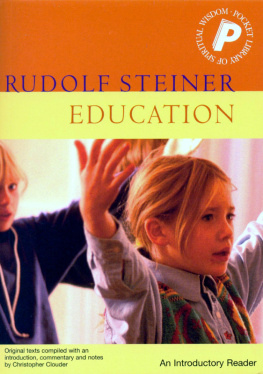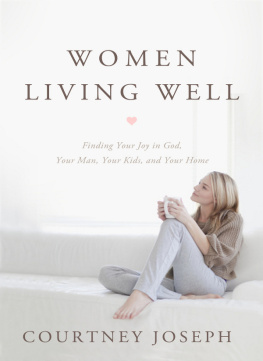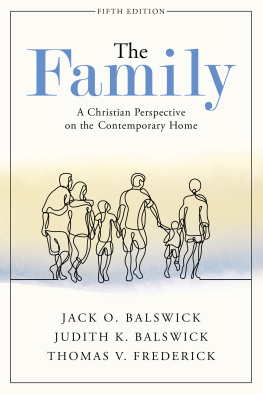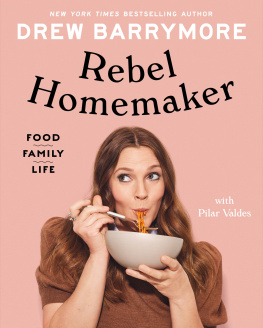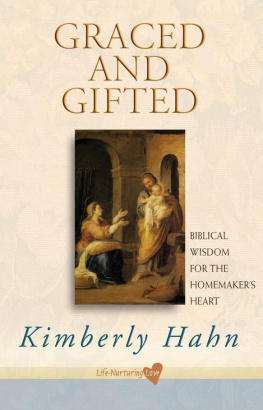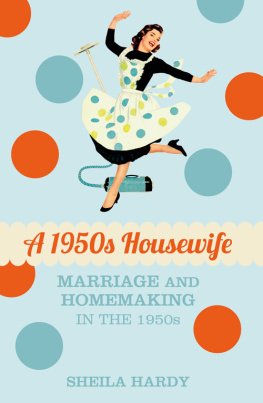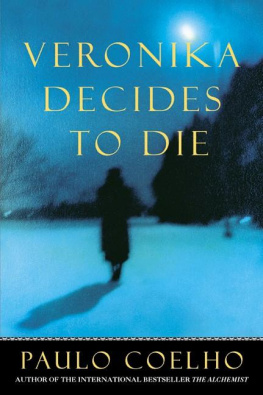VERONIKA VAN DUIN, born in Scotland, trained as a nursery nurse. For many years she lived with people with special needs, together with her own family, and later took in teenage boarders. These experiences led her to search for ways of creating a home that could contribute to a sound and healthy society. She currently lives with young children with special needs and runs seminars and workshops for homemakers. She is married and has three grown-up children.
SOPHIA BOOKS
BRINGING SPIRIT INTO LIFE
A series of books which bring modern
spiritual ideas into lifefor
practical use in everyday life.
ALSO IN THE BRINGING SPIRIT TO LIFE SERIES:
Adventures in Steiner Education, An Introduction to the
Waldorf Approach
Brien Masters
A Child is Born, A Natural Guide to Pregnancy, Birth and
Early Childhood
Wilhelm zur Linden
From Stress to Serenity, Gaining Strength in the Trials of Life
Angus Jenkinson
The Journey Continues ..., Finding a New Relationship to Death
Gilbert Childs with Sylvia Childs
Meditation, Transforming our lives for the encounter with Christ
Jrgen Smit
Raising the Soul, Practical Exercises for Personal Development
Warren Lee Cohen
Steiner Education and Social Issues, How Waldorf Schooling addresses the problems of society
Brien Masters
Well I Wonder..., Childhood in the Modern World, A Handbook for Parents, Carers and Teachers
Sally Schweizer
Your Reincarnating Child, Welcoming a Soul to the World
Gilbert Childs and Sylvia Childs
Homemaking as a Social Art
Homemaking
as a Social Art
Creating a Home for
Body, Soul and Spirit
Veronika van Duin
Sophia Books
Sophia Books
Hillside House, The Square
Forest Row, East Sussex RH18 5ES
www.rudolfsteinerpress.com
Published by Sophia Books 2000
An imprint of Rudolf Steiner Press
Reprinted 2005, 2007
Veronika van Duin
The moral right of the author has been asserted under the Copyright, Designs and Patents Act, 1988
All rights reserved. No part of this publication may be reproduced, stored in a retrieval system, or transmitted, in any form or by any means, electronic, mechanical, photocopying, or otherwise, without the prior permission of the publishers
A catalogue record for this book is available from the British Library
ISBN 978 1 85584 433 9
Cover by Andrew Morgan Design
Typeset by DP Photosetting, Aylesbury, Bucks
Contents
Acknowledgements
Very grateful thanks go to Siobhn Porter, Janet Coggin, Christine Lammers and Ann Druitt, who read, criticized and endlessly corrected my spelling and grammar! I couldnt have done this book without them.
Thanks also to Miriam Mller, Phil Flett and Helen OMeara for their cheerful encouragement.
My most grateful thanks and love to my husband, Rob, who never gave up on me.
Author's Note
When I first started homemaking, it was for the sake of my daughter. I wanted her to experience as warm and happy a home as I had had. The principles that underpinned my very satisfactory childhood came from the remarkable work of Rudolf Steiner.
As a parent and homemaker with a growing family, I began to study his writing, wanting to understand what had fired my parents ethics. From the study of spiritual science, practising what I had learned seemed a sensible next step. Then followed the request to pass it on to other homemakers, through workshops, lectures and seminars. The fruits are to be found in the pages of this book.
For the sake of flow and continuity, I have refrained from attributing specific principles on human development to Rudolf Steiner, but instead have included a bibliography from which source material homemakers wishing to do their own research can find a beginning. With these few words I wish to acknowledge my overwhelming debt to Rudolf Steiner's spiritual inspirations and very practical guidance for daily living.
Veronika van Duin
Why Be A Homemaker?
The Role of the Home
In the world of today, the place of the home and its relevance to life in general has become something of an issue. We used to be quite content to assume a good home to be everyone's background, unless of course, they were underprivileged, impoverished, or of the criminal classes! Nowadays this assumption would not only be politically incorrect, but also factually at fault. A good home is not something everyone has. A place to sleep, to eat, and to receive some shelter seems to be all that many adults seek. And yet the need to return to family values, to a secure and solid home is heard as a cri de coeur from sociologists, psychologists and social workers.
As a result, not only sociological, but also educational and medical studies have been carried out, strongly suggesting that many human frailties, diseases and problems can be laid at the door of an empty and soulless home. It is becoming apparent that those people whose background is a harmonious, creative, empowering home are better adjusted to life and generally make good use of their intelligence. Those who suffer maladjustment, anti-social behaviour or are slow learners are often discovered to have had problems in their home, especially during childhood. A sound, healthy home is a foundation for a sound, healthy life.
People used to live at home, sharing hopes and aspirations, gaining fresh courage to face life's vicissitudes. In times gone by, children knew that when they were at home, Mother would be there and Father would come home to administer the expected discipline. There was a predictability about home. One knew where one was.
The woman's role was a fixed one. She represented the nurturing aspect in life; she cooked, cleaned, nursed, sewed, decorated, comforted, encouraged, listened and put her own needs second to everyone else's. She did not complain, at least not loudly. She accepted her lot as Eve's and bore her children in pain. The man's role was equally clear. His career was all-important, he was the hunter-father, the chastiser, the disciplinarian, the one-who-knows, the authority. He provided security, physical comforts, food, fire and maintenance.
In times much further in the past, the role of the woman in the home was different. She was the priestess-mother, the one who, in the home, ruled with an iron rod. Father took second place, waiting upon the priestess, offering his skills as hunter and protector. We lived in tribes, the nuclear family being quite unimaginable. Home was the warmth of the tribal hearth, shared by all who belonged. The nest-building instinct was an integral part of human development. However far back we go in history, the roles of woman and man were always clearly defined, though who had the power varied in different cultures and different parts of the world. As it still does today.
More recently, especially in our western society, the place of the woman began to feel restricted within society's narrow perception. It no longer seemed to suit the developing consciousness and was becoming a role without a future. There were designated things she was permitted to do but so many more were denied to her. There was no equality, and freedom had to be sought within a given framework. Men, too, suffered from taboos and restrictions, but they were able to circumvent them because they held the power of decision politically, culturally and identifiably within society. With the work of the suffragettes the scales were tipped. We all know of the long hard haul womanhood has suffered to create a freer and more balanced role within society. Unfortunately this did not happen without casualties, the main ones being motherhood and homemaking.
Because creating the home was seen as an essentially feminine task, with the rise of women's rights, feminism, and equality for all regardless of sex, the first place to take a beating was the home. All of a sudden (and certainly within the stream of history it occurred suddenly) it appeared that women refused to stay at home. Home lost its appeal as a place of refuge, as a nest, as a nurturing haven, and turned overnight into a trap, a pit, a prison where all hopes for fulfilment could never be realized.
Next page


